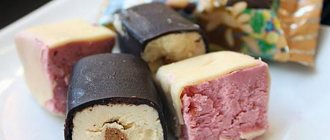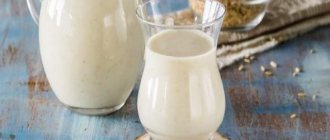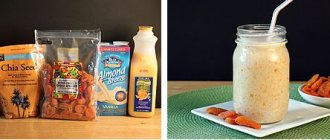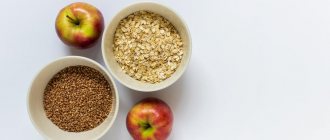Cocoa is a delicious drink with a bright chocolate taste, which many have loved since childhood. This is not surprising, because it is often given for breakfast or afternoon snack in preschool institutions. But is it possible for adults to regularly drink cocoa, and are children often allowed to indulge in the drink? Of course, the answer to this question depends on the benefits and harms of cocoa powder, which, in turn, depends on the composition and nutritional value.
Nutritional value of cocoa
Cocoa powder is the cake from grated cocoa, which is formed after the oil necessary for making chocolate has been squeezed out of it. Cocoa cake is dried and ground, after which it is used to make various drinks, including cocoa and hot chocolate. Cocoa powder can be called a waste product from chocolate production, but its macronutrient composition is richer than that of cocoa butter, and, consequently, chocolate itself.
BJU cocoa per 100 grams:
- Proteins 24.3 g
- Fat 15 g
- Carbohydrates 10.2 g
Cocoa powder contains a lot of dietary fiber - 35 grams, which even exceeds the daily requirement. Almost 4 grams out of 100 are organic acids in cocoa powder, and about 7 grams are ash.
AI cocoa
The insulin index of cocoa is low (from 22 units) in the absence of high-calorie and fatty additives during preparation. The product can be included in dietary programs and the diet of diabetics.
The glycemic index of cocoa powder is also low (about 20).
Nutritional value of cocoa powder per 100 g:
- carbohydrate compounds - 57.90 g;
- fats - 13.70 g;
- protein compounds - 19.60 g;
- water - 3.00 g;
- sugar - 1.8 g;
- ash - 5.80 g;
- fiber - 37 g.
The calorie content of the product per 100 g is 232 units. There is no starch, cholesterol, or harmful trans fats in the powder, so the product does not have a negative effect on the body of people with diabetes.
We recommend that you read the Insulin index of cottage cheese
100 g of powder contains 25% of the daily protein requirement.
Cocoa contains a rich complex of micro- and macroelements:
- iron;
- manganese;
- zinc;
- calcium;
- phosphorus;
- magnesium;
- potassium;
- fluorine;
- sodium;
- copper;
- selenium.

The powder contains a complex of vitamins:
- E;
- K;
- Group B (B1-B9);
- A;
- D;
- WITH.
Chemical composition of cocoa
The vitamin composition of the product is quite diverse, but not too rich: most of all there is vitamin PP: 34% of the daily value. Three times less vitamin B2, riboflavin: 11% of the daily value, 7% of the daily value of vitamin B1. Vitamin E in 100 grams of product contains only 2% of the norm, and vitamin A is even less: only 0.3% of the norm. Considering that to prepare the drink you only need to take a couple of spoons of cocoa powder, the drink will not be the most fortified.
But what “chocolate” powder can boast of is its macronutrient composition. The clear leader here is magnesium: together with 100 grams of the product, the human body will receive the daily requirement of this substance. A little less phosphorus: 82% of the daily norm, also a lot of potassium - more than half the daily norm. The product is also rich in calcium: 100 grams contains 13% of the daily value, but sodium is only 1%. One of the microelements that stands out is iron: more than the daily norm in 100 grams of the substance.
How to properly prepare cocoa with milk
Despite the obvious simplicity of the recipe, few people know how to prepare cocoa correctly. You can’t just mix all the ingredients; the taste will be, to put it mildly, bad. You should take into account the proportions of the components used and strictly follow the established algorithm. To prepare 1 serving of drink, you will need to spend about 5 minutes on preparation and another 5 minutes on the process itself. You need to prepare 250 ml of milk, 50 ml of boiling water, 1.5 tablespoons of cocoa powder and 1.5 tablespoons of sugar (optional).
The drink is brewed according to the recipe:
- Boil the milk. It is best to do this in a saucepan with thick walls. You must first pour ice water over them from the inside, this will help avoid burning. Bring the milk to a boil over medium heat.
- At the same time, dissolve cocoa in boiling water. Stir until completely dissolved; there should be no lumps.
- As soon as the milk boils, sugar is added to it. And also stir until completely dissolved.
- Pour cocoa dissolved in boiling water into milk. Keep on fire for 1-2 minutes.
The chocolate milk drink is ready. You need to drink it hot, while the taste and aroma remain rich. For children, it is recommended to cool slightly so that they do not get burned. After removing from heat, you can add spices to taste: vanilla, cinnamon, grated nutmeg or dark chocolate.
Almost everyone loves cocoa, both adults and children. It is healthy, has a rich chemical composition, and is calorie-free. It only takes 5 minutes to prepare a drink with added milk. In this case, you don’t need any special culinary skills; the main thing is to follow the algorithm and maintain the proportions of the ingredients.
The benefits and harms of instant cocoa
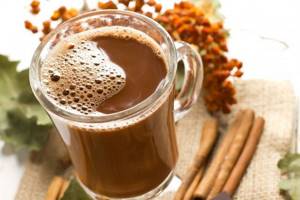
Since cocoa cake contains a lot of B vitamins, as well as a lot of potassium and magnesium, the drink is especially useful for the nervous and cardiovascular systems. Moderate consumption of the aromatic drink will help lower blood pressure, strengthen the heart and blood vessels, and improve the condition of arrhythmia.
Theobromine, an analogue of caffeine contained in the powder, excites the nervous system, dilates blood vessels and bronchi. For this reason, it is useful to enjoy a cup of aromatic drink in the morning or afternoon to invigorate and finally wake up. This is an excellent coffee replacement. But it is not recommended to drink the drink in the evening, as it will interfere with your sleep. Drinking the drink provokes increased production of endorphins, which will provide a good mood and a boost of energy. If you prepare a drink without sugar or with minimal sugar content, it will be a good substitute for chocolate - it will provide you with a great mood, but not with excess calories. Endorphins also increase performance and improve overall well-being.
Since cocoa mass contains B vitamins, a drink made from it is good for the brain: it will increase its activity, improve memory, and ensure mental clarity. The flavonoids and antioxidants contained in the drink help remove harmful enzymes from the human body, and protect cells from aging.
Phosphorus and calcium, contained in large quantities in the product, will ensure bone density, reducing their fragility. Of course, if there are serious problems with the bone system, cocoa alone will not do, but it would not be a bad idea to introduce it into your diet.
AI cocoa drink, with and without sugar, with and without milk
In a sugar-free drink, the insulin index is low - 20 units. However, adding granulated sugar will increase the insulinemic index to 60. The sugar-free drink is beneficial for diabetics and people on diet programs.
When preparing cocoa with milk, the insulin level will increase by 30 units. and will be about 50-55.
A natural product without high-calorie additives can be used in dietary nutrition and has the following positive effects:
- toning the body;
- strengthening the immune system;
- prevention of vitamin deficiency;
- antioxidant;
- normalization of blood pressure;
- improvement of the circulatory system;
- launching the processes of regeneration of body tissues;
- normalization of the nervous system, sedative effect;
- improved mood due to the presence of serotonin and dopamine in cocoa;
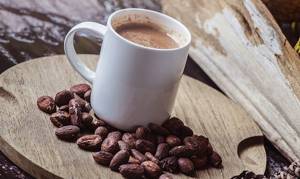
- improvement of stomach condition with gastritis, ulcers;
- removal of toxic substances from the body;
- improving memory quality;
- improving the condition of hair and nail plates.
We recommend that you read the Insulin Index of Fruits
Harm from cocoa
Cocoa powder can cause allergic reactions, which is especially dangerous for children and pregnant women. Since the product contains caffeine and its analogues, it may be harmful at night. At the same time, even cocoa without sugar has a high calorie content, so in the evening it is better to give up the pleasure of drinking a cup of aromatic chocolate drink.
We must not forget that cocoa beans are grown in not the most prosperous countries. The product may be produced and processed in unsanitary conditions, and when the substance is stored, it is sometimes infested with cockroaches and other insects. To rid bean plantations of pests, they are sprayed with pesticides. Therefore, harmful substances may accumulate in the product.
The benefits and harms of cocoa for children
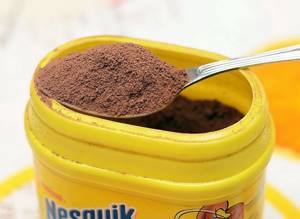
It's hard to find a child who doesn't like cocoa. Sometimes it is impossible to limit a child to one cup, unless, of course, the drink is prepared without disgusting foam.
Magnesium has a positive effect on children's sensitive nervous system and also improves intestinal function. Sometimes children do not have enough iron, which negatively affects their health, well-being, and academic performance. This is where the high iron content in instant cocoa comes in handy. Group B vitamins, as we said, stimulate brain activity, which is very important for schoolchildren and kindergarteners. Cocoa bean cake contains a lot of calcium, phosphorus and zinc, and this is very important for the formation and strengthening of a child’s bone tissue. If the drink is made with milk, its beneficial properties increase.
Many people buy cocoa powder from Nestlé for their children. A natural question arises: what are the benefits and harms of Nesquik cocoa? It is worth noting that there are significantly fewer useful substances in this product. For example, there is no dietary fiber at all, and the ratio of proteins, fats and carbohydrates is not changed for the better. The ratio of BJU in Nesquik cocoa is 4.5 g: 3.2 g: 81 g. Please note: compared to “regular” cocoa powder, the amount of carbohydrates in Nesquik is increased by 8 times. And all because in the packaging of the product the lion's share is occupied by sugar, and not by grated cocoa. One can object to this: when preparing a drink, we still add sugar; not everyone will like an unsweetened drink. But when buying a product that does not contain sugar, we ourselves determine how much sweetener to add. In the finished version of Nesquik, the manufacturer “decided” everything for us. And he decided to save money by putting little grated cocoa and a lot of sugar in the package. As you know, sugar is addictive, so many children may want to drink this drink regularly. Often pampering your baby with such a delicacy, there is a danger of causing him to develop diabetes.
The benefits and harms of cocoa for weight loss
Cocoa is not a drink that is strictly taboo in the diet. On the contrary, there are even cocoa diets. And some experts recommend occasionally pampering yourself with a cup of aromatic drink while on a diet. It will supply the body with useful substances, including fiber, which has a positive effect on weight loss. It will charge you with vigor and good mood, and provoke the production of endorphins.
The powder contains polyphenols that dull the feeling of hunger. Diets are easier to tolerate if you include a small portion of cocoa in the diet, and this despite the rather high calorie content of cocoa beans. Moreover, by drinking such a drink, it is much easier to suppress the desire to eat unhealthy chocolate or a bun. At the same time, the drink should be prepared without adding sugar. If you don’t like this product at all, you can add a little honey or sweetener.
Calorie content of cocoa powder
The nutritional and energy value of cocoa varies slightly from manufacturer to manufacturer. Exact data can be found on the packaging. On average, cocoa has a considerable calorie content per 100 grams: 287 units. The calorie content of Nesquik cocoa reaches 400 kcal per 100 g. These figures refer to cocoa powder, and to prepare the drink we use only a few spoons of the substance.
The calorie content of 1 teaspoon of cocoa powder (9 grams) is approximately 27 units. To prepare a 250-gram serving of cocoa using water, you will need an average of two teaspoons of cocoa and sugar. Two spoons of sugar contain approximately 70 kcal, which gives the calorie content of a mug of cocoa 125 units. A glass of cocoa will have slightly fewer calories. Cocoa with sugar has a considerable calorie content, so honey, fructose, etc. can be used as a sweetener.
While drinking this tasty and healthy drink, do not forget to include its calorie content in your total daily calorie intake.
How many calories are in a cup of cocoa?

Cocoa is not only a favorite children's drink. Many adults adore this warming, aromatic, sweet and simply incredibly tasty drink. It's just that they have more problems. You can’t just enjoy the taste of the drink; you still need to find out how many calories are in cocoa without sugar.
First, let's determine what the nutritional value of cocoa powder is. There are approximately 290 kilocalories in a 100-gram portion of the bulk substance. One teaspoon will contain about 29 kilocalories, and one tablespoon will contain 74 kilocalories. If you simply pour hot water over the powdered mixture, the nutritional value of the drink will remain unchanged and will not exceed 50 kilocalories.
How many calories are in cocoa with sugar? Adding sweetener instantly increases the nutritional value. One cup of warming drink with a spoonful of granulated sugar will contain approximately 80-100 kilocalories. But this is provided that you prepare a water-based drink.
How many calories are in cocoa with milk? In one cup with a nominal volume of 250 ml, the nutritional value is about 102 kilocalories. If you remove granulated sugar, the calorie content will decrease by about 30 kilocalories.
Today there are many different cocoa mixtures on sale with the addition of milk powder, cream, sweeteners and other flavor enhancers. And parents give such drinks not only to their children, but also drink them with pleasure themselves.
A completely logical question arises: how many calories are in Nesquik cocoa? A 100-gram serving of raw materials contains approximately 379 kilocalories. But a cup of cocoa with a nominal volume of 250 ml will contain from 240 to 255 kilocalories. Of course, during a diet, drinking such a drink is practically prohibited, since one cup is a fifth of the diet in terms of caloric content.
Most of this aromatic drink is carbohydrates. In second place are proteins, but they contain very little. The last position is occupied by fats; they are also found in cocoa beans.
If you want to get only the benefits from a cup of cocoa, choose high-quality, natural raw materials. Carefully read the information on the packaging. Try to avoid purchasing cocoa with additives. You can prepare it yourself, for example, with skim milk or low-calorie cream, “replacing” granulated sugar with a substitute. The nutritional value of such a drink will be much lower.





